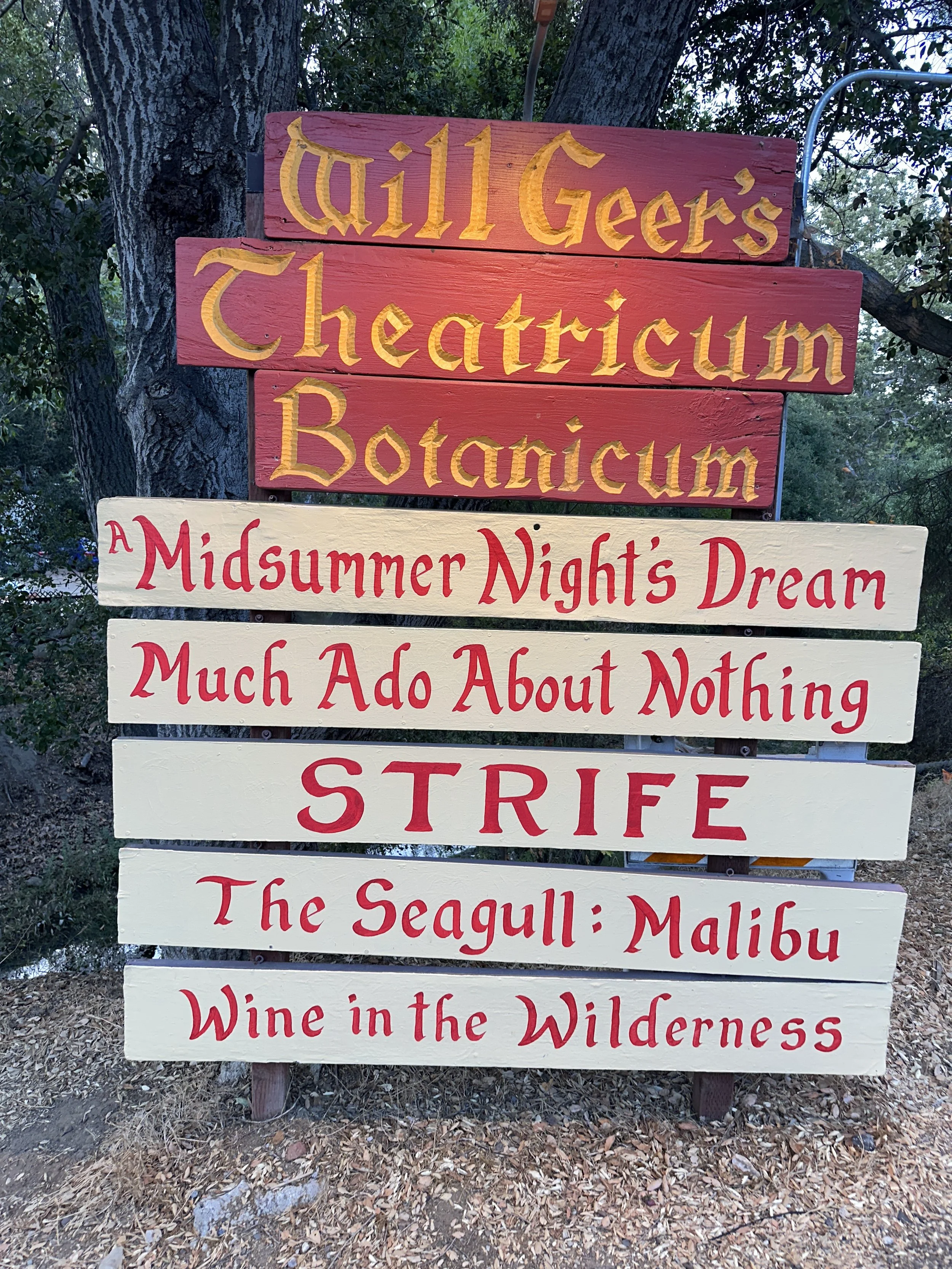This past weekend, Katy and I went to see A Midsummer Night’s Dream at our local playhouse, Theatricum Botanicum.
Before the show started, we grabbed burritos from the taco truck parked outside the gates, a fittingly casual way to begin an evening of Shakespeare under the oaks.
It was one of those summer nights in Topanga that felt just right: warm enough to be comfortable, cool enough to be glad we’d packed an extra layer.
The back row view
We found our seats near the back in the general admission section.
From there, the stage opened wide before us, nestled into the hillside and framed by trees. I loved that view — not too close, not too far, but enough to take in the whole picture at once.
As the sun went down and the performance began, it felt like the canyon itself became part of the stage. The trees were the backdrop, but also characters in the story, silent but alive.
The play of the mind
And then the play unfolded: the mismatched lovers, the mischievous fairies, the transformation of confusion into harmony.
The lighting cast the stage in shades of mystery — purple shadows for the forest, golden glows for moments of clarity.
It struck me how much this mirrored the way meditation works. At first, the mind feels crowded with characters — thoughts, judgments, distractions — all bumping into each other. Then, little by little, light shines in, and the chaos softens into something coherent.
I especially loved the fairies. Their playful, trickster energy felt like an echo of the wandering mind, which is the part of us that resists order, makes mischief, and dances between the serious and the absurd. In meditation, too, there are these inner sprites. But just like the story itself, they belong. They are part of the play.
Settling into presence
About halfway through, we got up to stretch and bring back hot tea, the steam curling into the cool night air.
Settling back into our seats, I realized how refreshing it was simply to be sitting outdoors, watching, listening, breathing. There was something meditative in that pause — no phone, no agenda, just being there.
Nature as the true stage
Sitting in the back row, I thought about perspective. Sometimes we think we need to be in the front — of life, of experience — to get the most out of it. But meditation teaches the opposite. By stepping back, by giving space, we often see more clearly. From where we sat, the whole stage made sense.
The theater itself felt like a metaphor for practice. Theatricum is built into the land — its wood and stone blending with the canyon. It reminded me that nature has always been the true stage, whether for Shakespeare’s words or for our own silent meditation. To sit under trees, whether in a crowded theater or in solitude, is to return to that stage where all of life’s stories unfold.
As we walked out at the end of the night, the laughter of the crowd mixing with the cool canyon air, I felt the kind of calm I usually associate with meditation. It wasn’t just about seeing a play — it was about the simple practice of showing up, paying attention, and letting the evening carry me somewhere unexpected.



